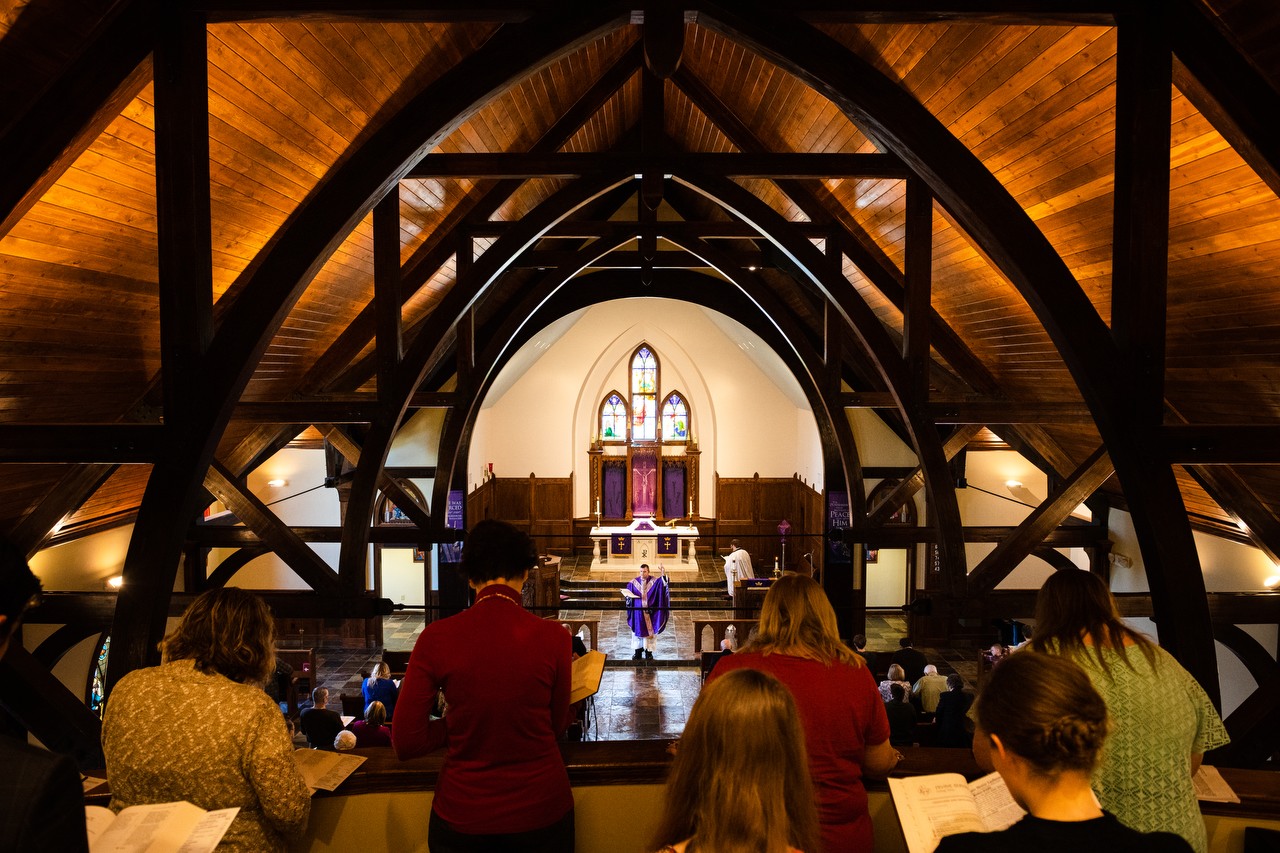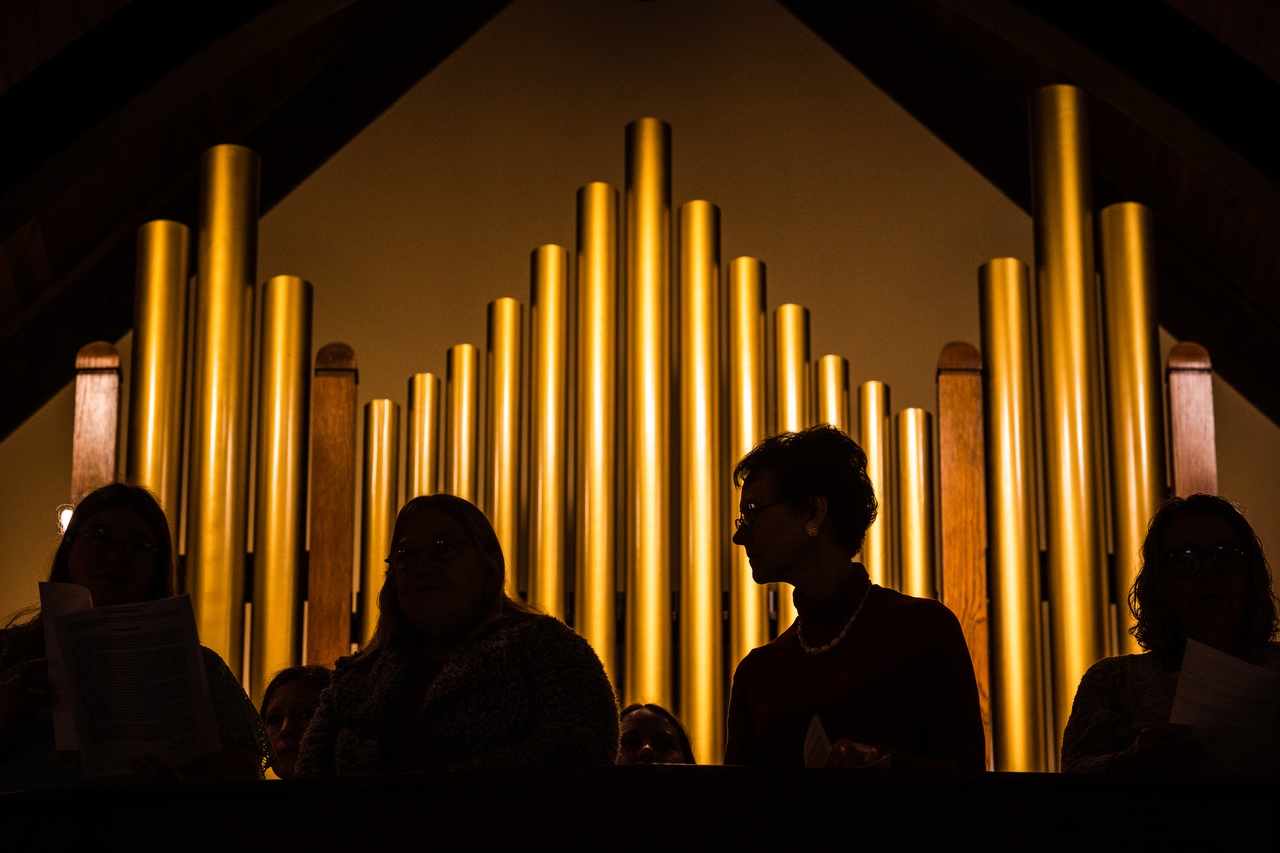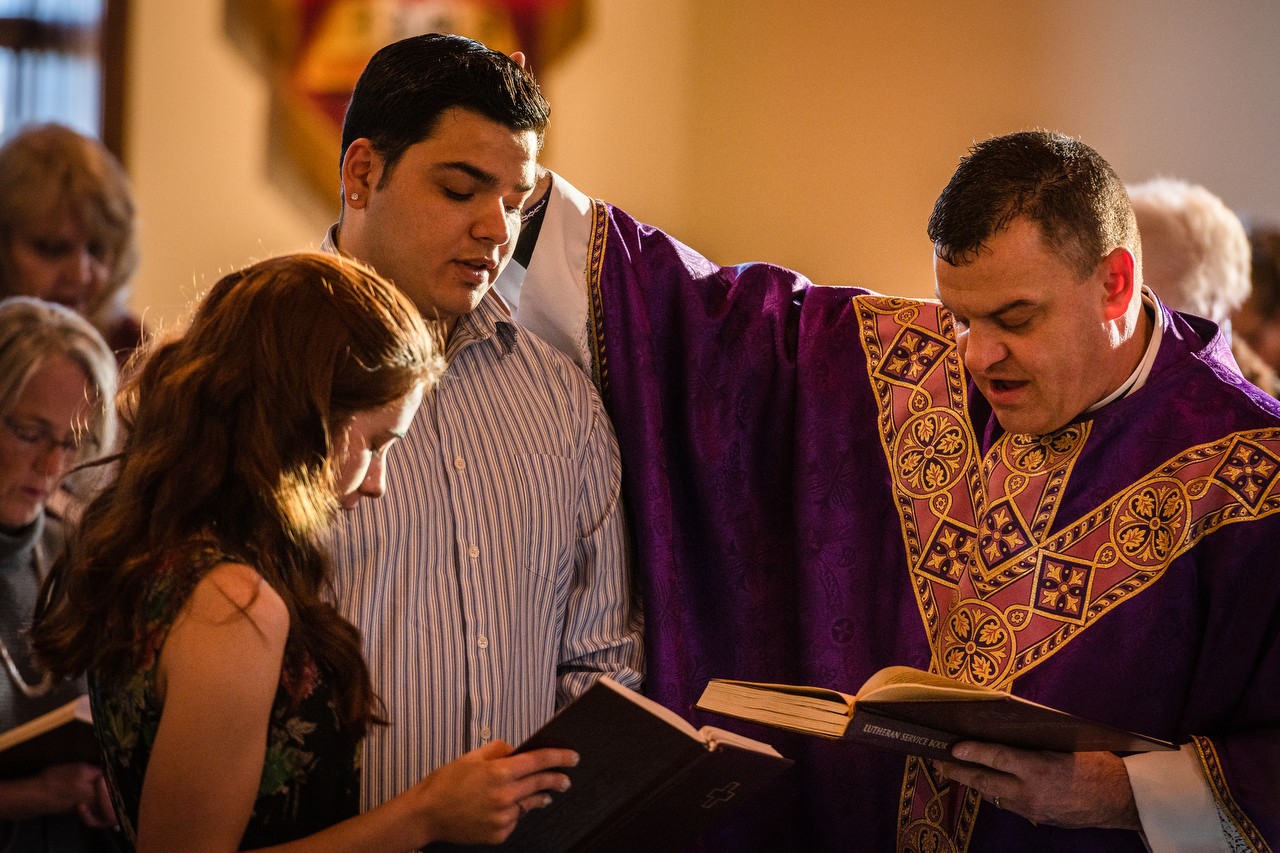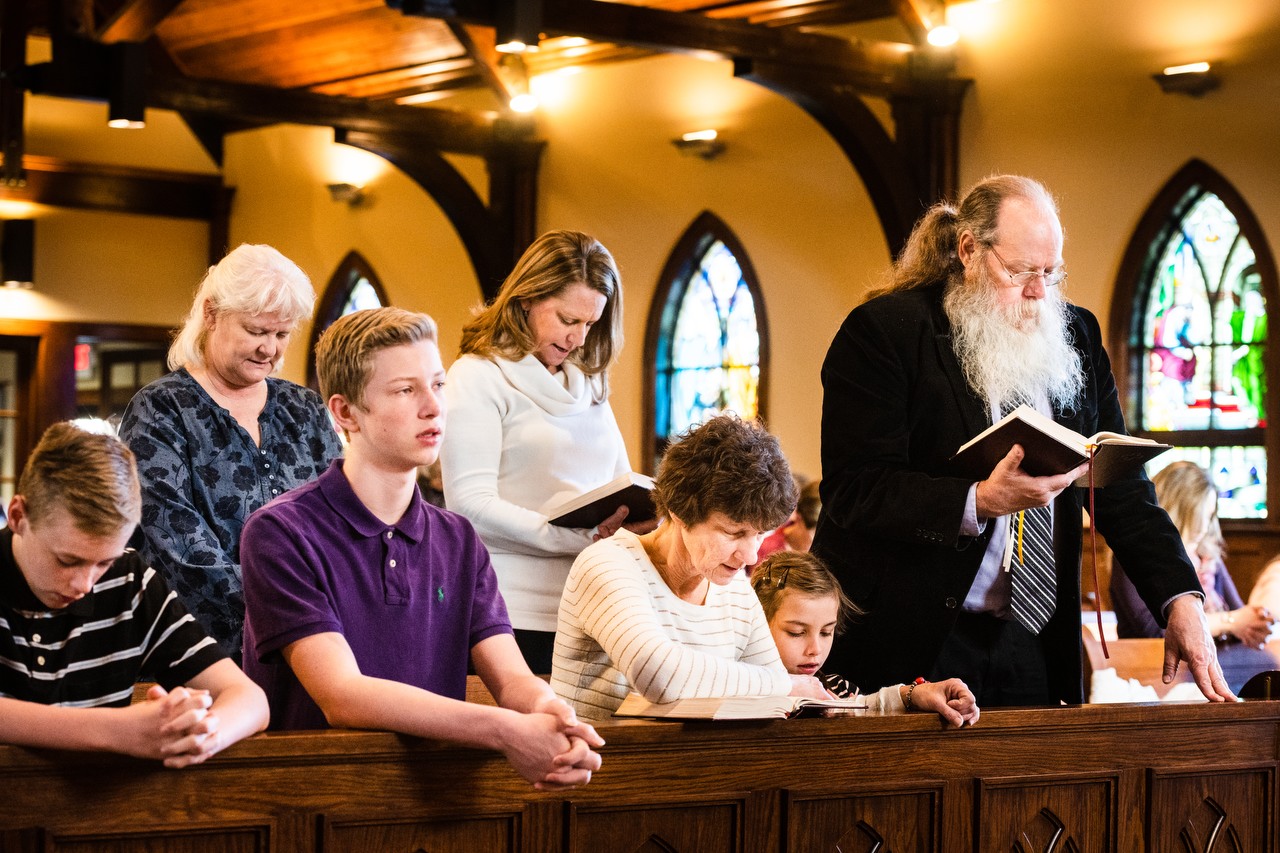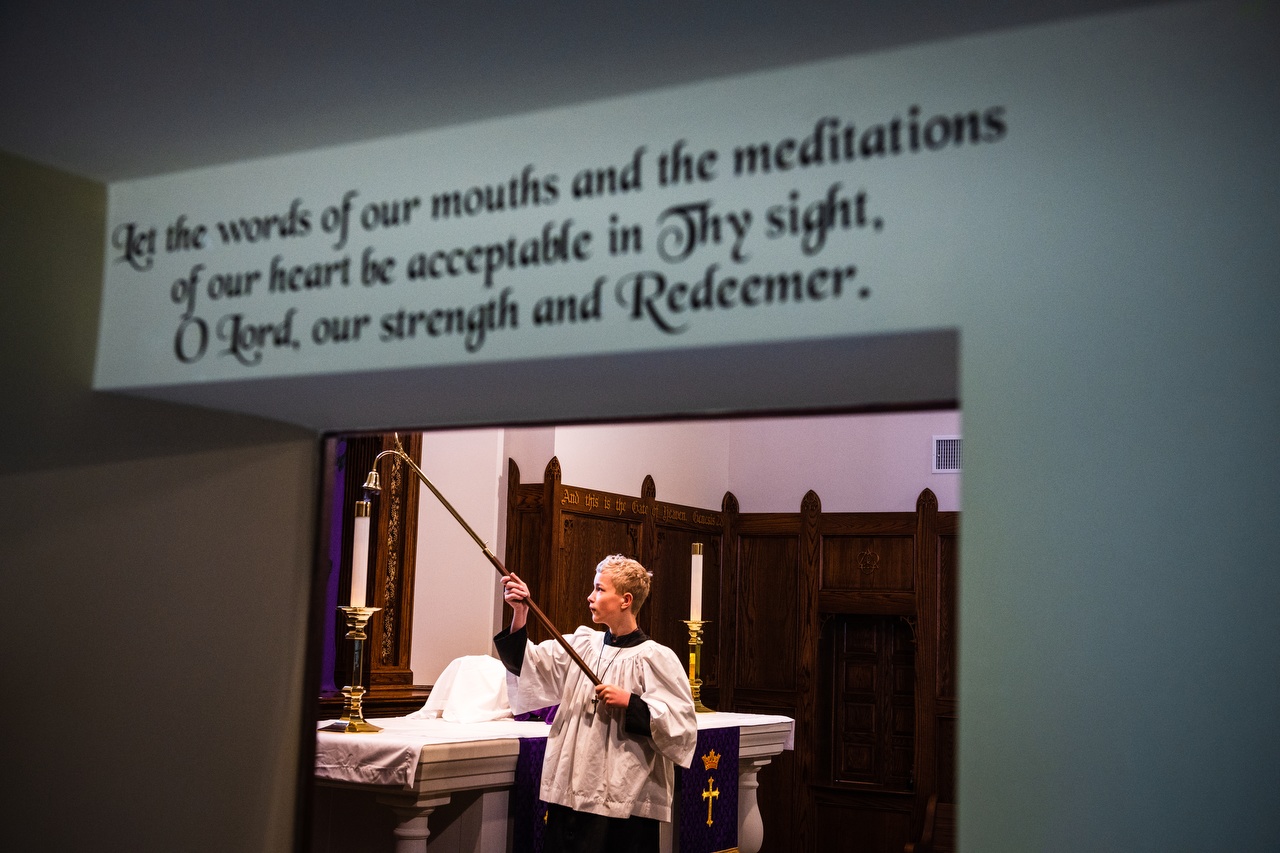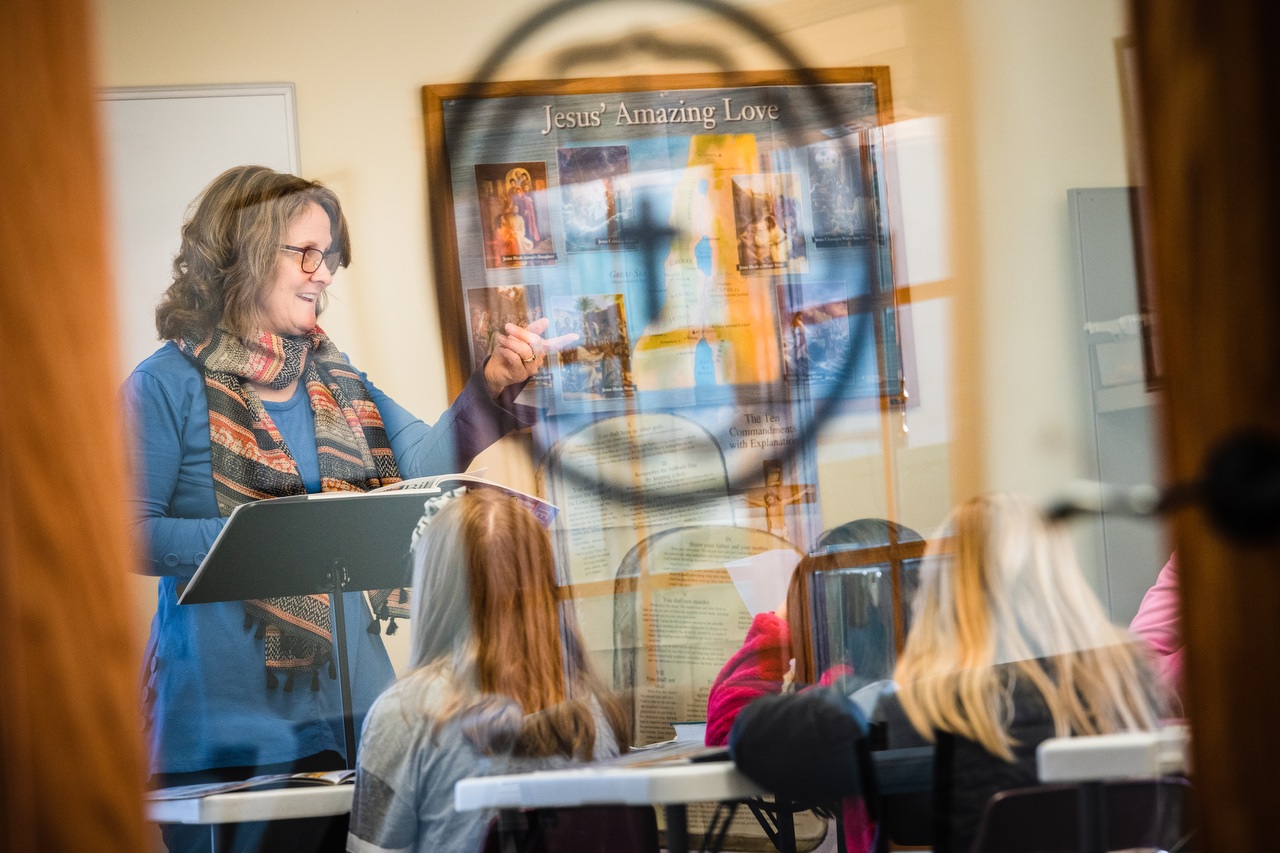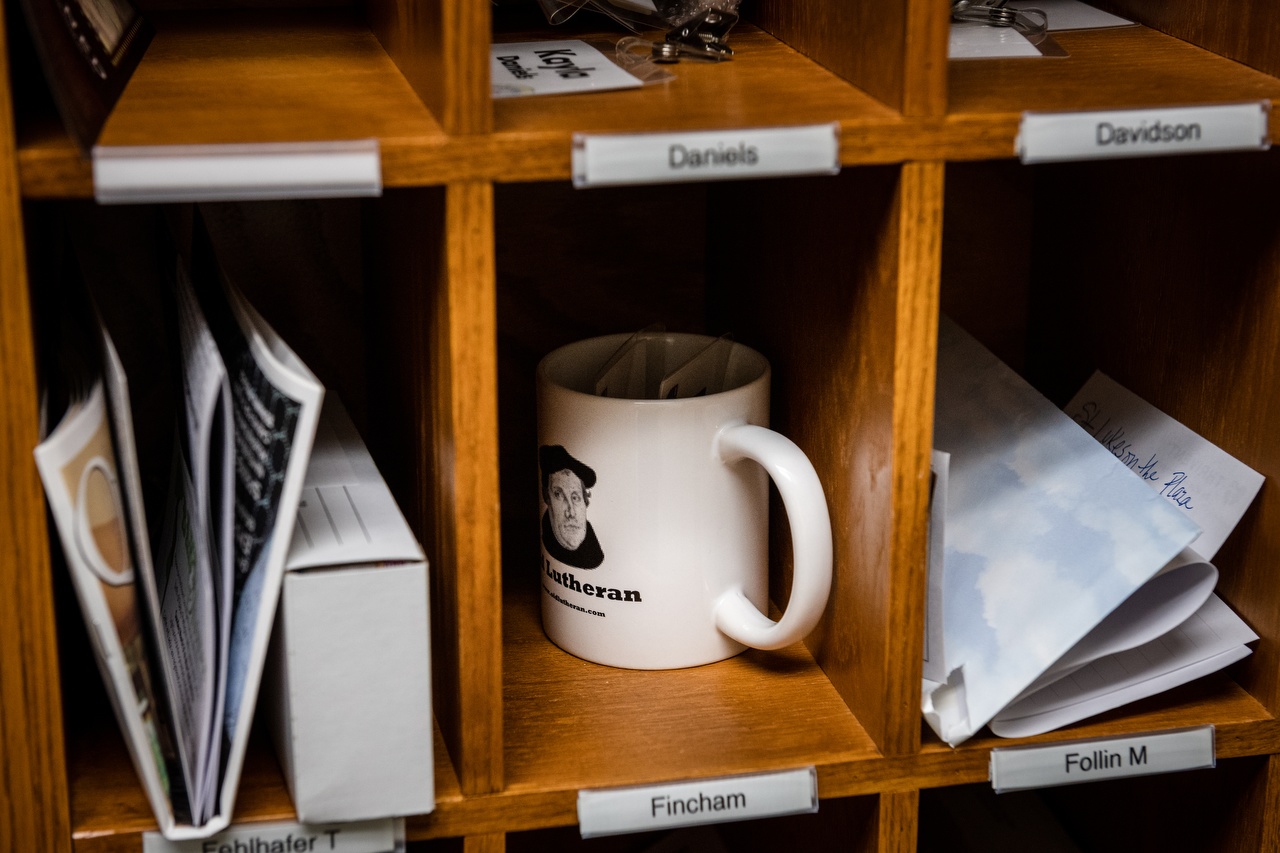National Mission
‘What a Time to Be Lutheran’
Congregations in Texas and Kansas have stepped out in faith to meet the challenges and opportunities presented by their unique situations.
The parishes of The Lutheran Church—Missouri Synod share the common confession of Christ and Him crucified. United in this confession and sharing in the fellowship given by the Spirit, no two churches are located in the same situations. Just as sure as the steadfastness of God’s love and promises is the duty to serve where God has planted.
God’s Word will not return to Him void. He will produce the harvest as He sees fit. And so the church will always be the church, preaching the Word, administering the Sacraments, in season and out of season. The uniqueness of each congregation presents opportunities and challenges alike. Yet the Word of the Lord does not rest until the final harvest.
The stories are as varied as the congregations. Some churches are in growing communities, which presents opportunities for church planting. Other congregations are facing decline and other challenges that question their ability to exist in the same way they have in the past.
Faith Lutheran Church in Plano, Texas, presents a history of planting churches in its burgeoning surrounding area. Risen Savior Lutheran Church in Basehor, Kan., is the result of two congregations that decided combination was better than keeping their separate ways. In these, and in other stories not in these pages, it is the Spirit who builds Christ’s church, even as Jesus promised.
A Place To Call Home in Kansas

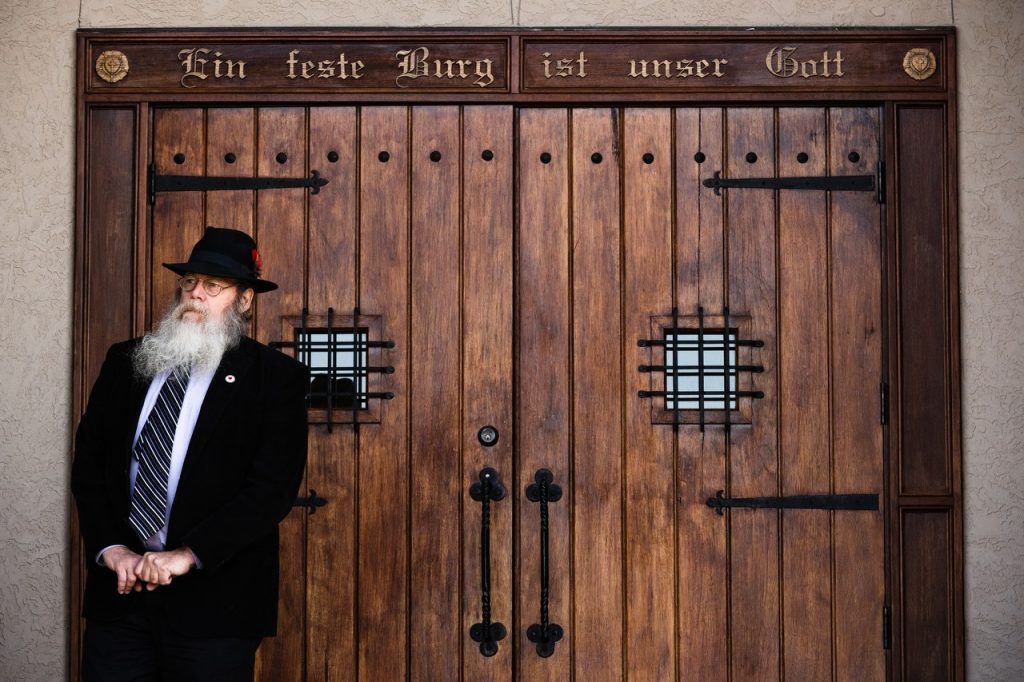
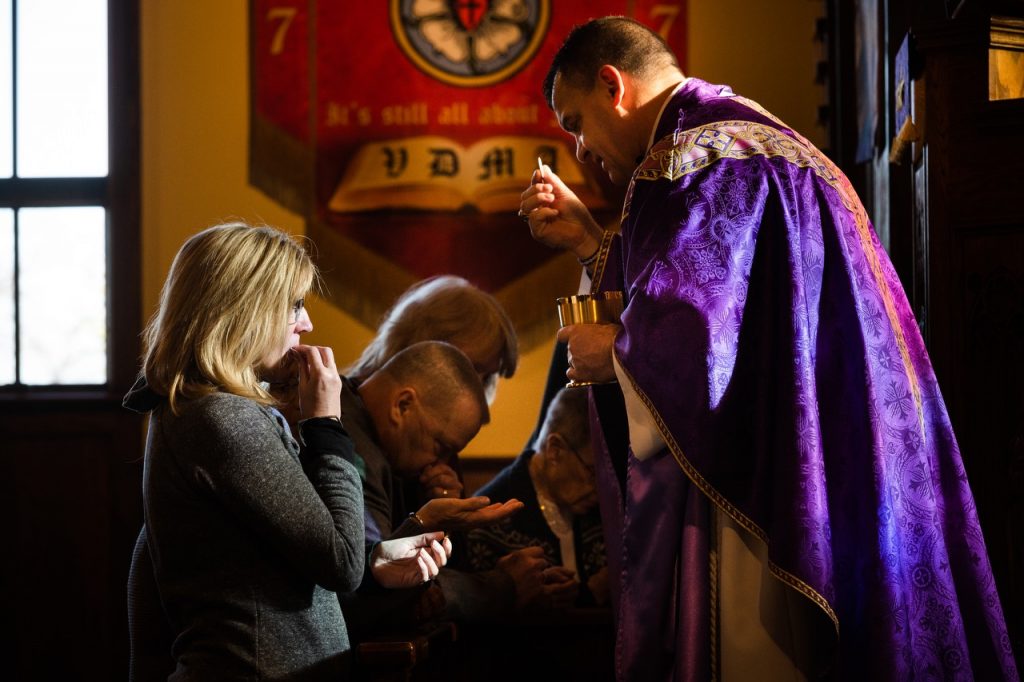
The Rev. Robert Weinkauf distributes the Sacrament at Risen Savior Lutheran Church, Basehor, Kan., in March.
Top row, from left: Exterior view of Risen Savior, and member Tim Selbe waits for worshipers.
“What a time to be Lutheran,” said the Rev. Robert Weinkauf, pastor of Risen Savior. “What a time to gravitate toward what makes us distinctly Lutheran, which is all about Christ.”
Ein feste Burg ist unser Gott. A mighty fortress is our God. Luther’s words, painted on the frame, adorn the church door at Risen Savior. And in this sanctuary, God brought peace and stillness from tumultuous waters.
Steve Mariano smiles and hands out bulletins for the service. Others greet him and pat him on the shoulder. He’s the church historian; on the last Sunday in March, he’s an usher for the early service. Mariano remembers when there were two small struggling congregations about seven miles apart — St. Martin Evangelical Lutheran Church and Emmaus Lutheran Church.
What God joins together let no man put asunder. While that verse is about marriage, this is a story about God’s timing to wed two congregations with a combined history of more than 100 years. United in the lifeblood of the church — Word and Sacrament — the two joined in 2008 to form a vibrant congregation, Risen Savior Lutheran Church, in this relatively rural area outside Kansas City.
The two have become one. One in Christ. Evidence of this union pervades the new church building. Members never forget the past, but they rejoice in God’s continued faithfulness. Two crosses, one inset into the other as a perfect match, adorn the hallway wall leading to the fellowship hall. One came from Emmaus, the other St. Martin. “It’s a beautiful symbol of how the congregations meld together into one,” said member Krista Byrd.
A foundation stone from each church is propped up in the sanctuary doorway. Two banners, one from each parish, hang on the wall framing two steep stained-glass windows, depicting Christ’s crucifixion and resurrection as our risen Savior. As the children’s choir rehearsed in the sanctuary before the second service, the past and the future testify to the hope all share in Christ.
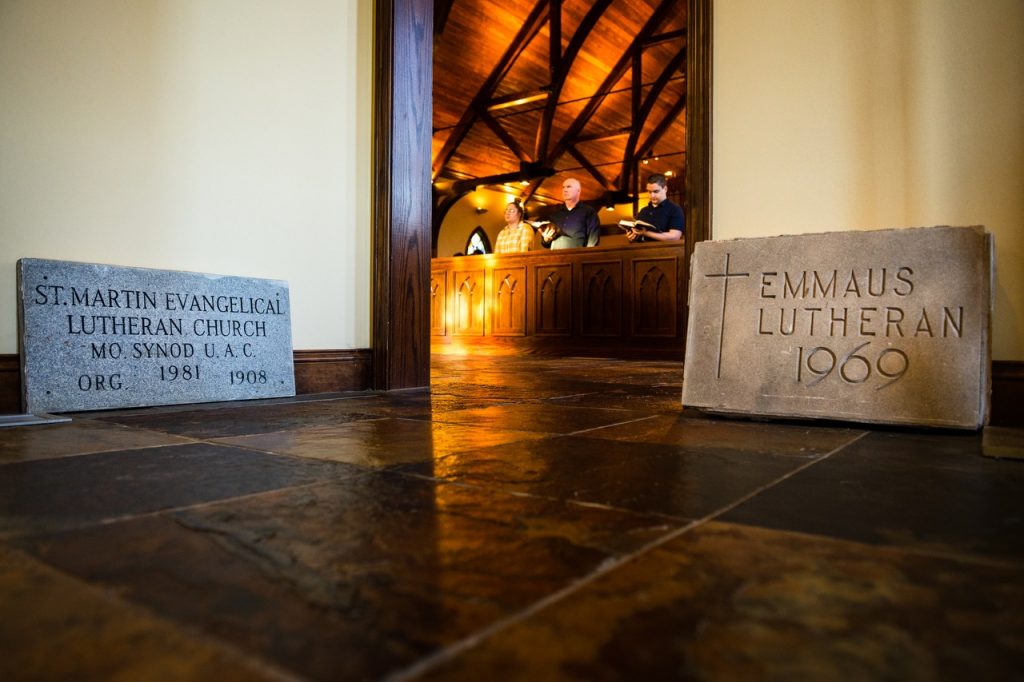
Foundation stones from the two churches that merged to form Risen Savior are propped up in the sanctuary doorway.
Below: Weinkauf (right) and member Krista Byrd walk in front of the hallway cross, which was created from crosses from Emmaus and St. Martin.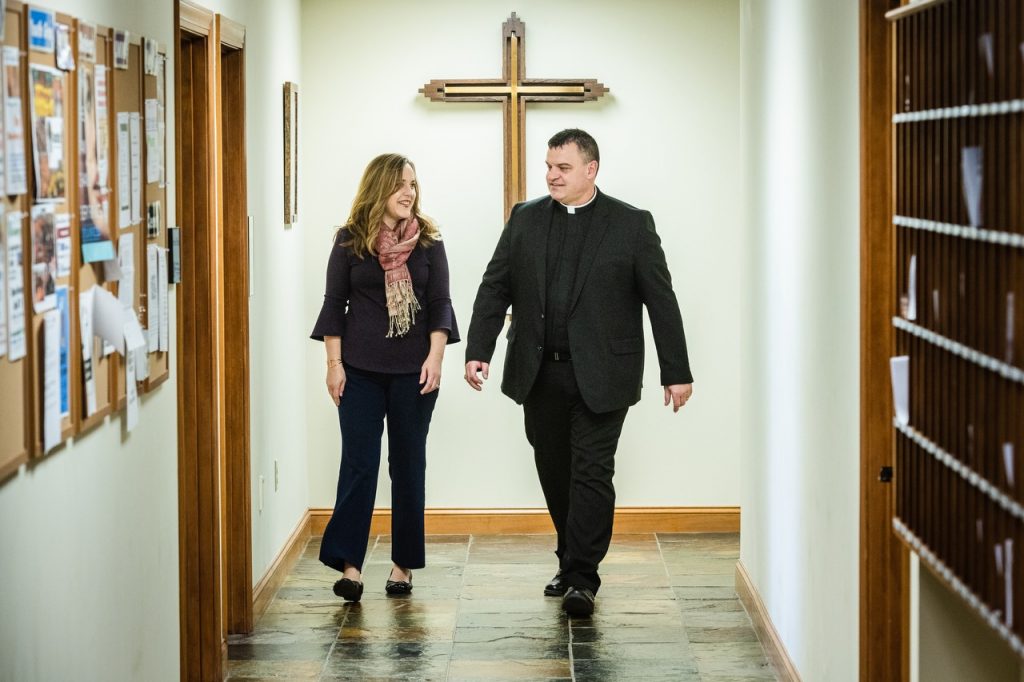
“It’s an amazing journey that our Lord puts before us,” said Weinkauf.
“You had an older church which had a young pastor, a younger church with an older pastor, and both were having financial difficulties,” said Mariano. The proceeds from Emmaus’ land formed the seed money for Risen Savior, and the younger pastor — Weinkauf — filled the role for both congregations when the older pastor retired. “The timing was perfect,” Mariano said.
A simple comment in September 2007 between the two pastors helped pave the way to the merger. Neighbors (even neighboring congregations) learn to help each other when difficulties arise. In the face of uncertainty, with no clear path forward for either congregation, the thought of forming one new parish brought, despite the initial mixed emotions, hope and possibilities otherwise unattainable.
“[The church is] indeed heaven and earth coming together as in no other place on this earth, and so then we consider how do we treat each other. How do we work with each other?” said Weinkauf. “What does that mean beyond our four walls? And certainly, also what it means within our four walls.”
The parishioners worked to bring the two congregations together. Conflict was resolved through prayer and discussion. A new building was erected — the steeple seen as you drive up the hilly road. When the sun descends in the West, the light casts a long shadow from the crucifix above the entrance.
“The unity of the body is a common goal … . It’s a family feeling,” said member Tim Selbe.
This is the family of Risen Savior. A mighty fortress is our God. It is a good time to be Lutheran in Kansas. And others are joining the family.
“One day we sat down in Risen Savior and knew it was home,” said Byrd, who joined with her family after the merger. “This place speaks the truth.”
Brightly gleaming morning sunlight streams through the stained-glass windows above the altar, casting multicolored patches down the aisle and over the stone baptismal font. The glittering light reflects off the green glass baptismal pool.
On that Sunday, 21-year-old Colbey Remigio was baptized. The saints received the Sacrament and heard the Word. Family and friends greeted one another before and after the service. Children went to Sunday school, and adults went to Bible class. In other words, it became a church home.
“We were created for eternity, and only eternal things can satisfy us. And that is where His Word and Sacraments bind us together in His works and His love and all that our Lord gives and does for us,” Weinkauf said.
Planting Congregations in Texas
Faith Lutheran Church, Plano, Texas, has been working to establish other congregations since the late 1970s and early 1980s. Due to the growth of the Plano area, 70 members of Faith left to start two church plants.
“It takes sacrifice on the part of the mother church to plant a new congregation,” said the Rev. James Woelmer, senior pastor of Faith. “It is tempting for the mother church to grow for selfish reasons rather than to start a daughter congregation. But in our situation, we eventually made up what we transferred away.”
The church has started four congregations: Immanuel in Allen, Emmanuel in Flower Mound, Faith in Wylie and St. John in Frisco. This focus on planting new churches characterizes the mother congregation’s history. When the Rev. Robert W. Hill, who had been pastor of Faith for 34 years, relocated in 2006, he started a new congregation, Peace Lutheran Church in Texarkana.
Some planting efforts reap great success. Other situations don’t ever see the fruits hoped for. But either way, Faith keeps seeking to plant more churches where the need arises.
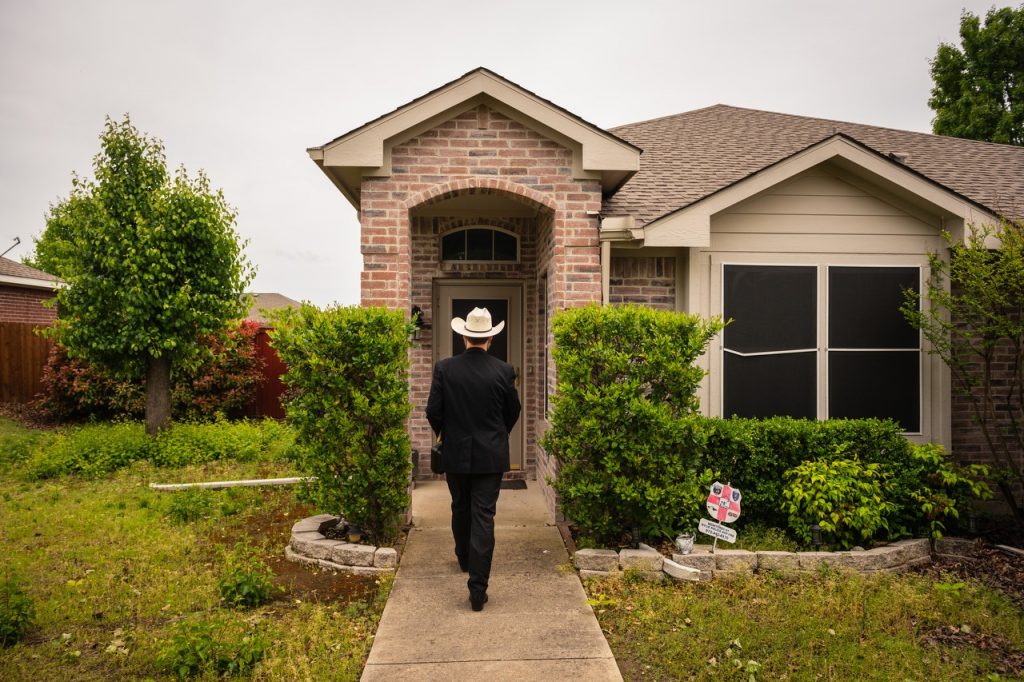


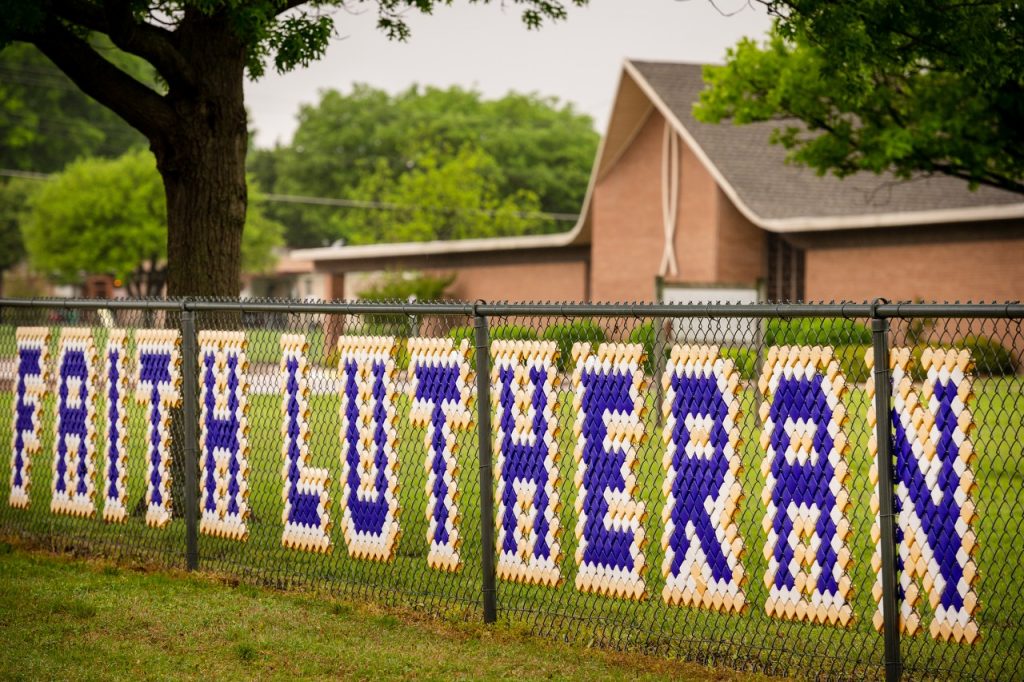
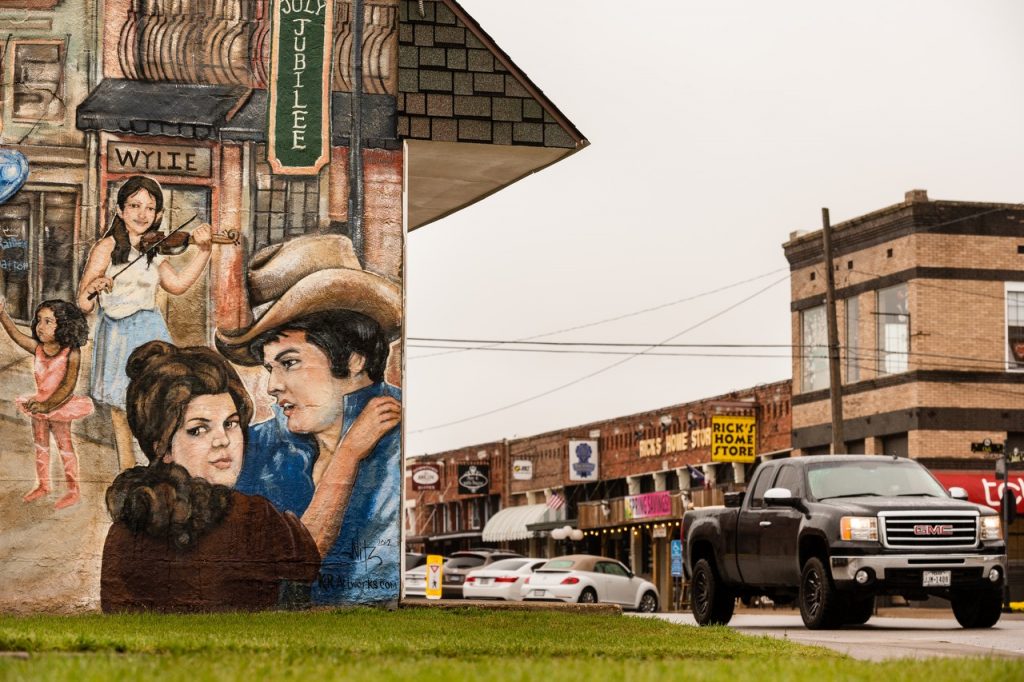
Top row: The Rev. Kurt Ulmer, pastor of Faith Lutheran Church in Wylie, Texas, visits a shut-in. Middle row: The Rev. James Woelmer, senior pastor of Faith Lutheran Church in Plano, Texas, leads chapel. Bottom photo: Downtown Wylie, Texas.
And that need is quite simple, yet vital. “Faith in Plano planted a daughter congregation because there was a need to supply Word and Sacrament ministry in a certain area,” said Woelmer. “Lutherans in a nearby city reached out to us and asked us to assist them in starting a church.”
Members and potential population growth help determine where congregations might be started in the future. Instead of starting a church in an area, members identify communities in which they already have a presence, but where there is no Lutheran congregation.
“Most of the time, these Lutherans (living a distance away) were already members of our church,” explained Woelmer. “Faith in Plano provided the Gospel for them and assisted them in starting a congregation.”
Looking at his congregation’s efforts, Woelmer suggests some things learned through their history of planting congregations:
1. A Lutheran church plant is a Lutheran church, which means its teaching, preaching and worship are distinctly Lutheran.
2. A core group of members is needed who will not compromise on the Word of God and the Lutheran Confessions.
3. An ordained Lutheran pastor is needed to teach, preach and administer the Sacraments.
4. A new church plant needs funding — including from foundations and other sources, when possible.
5. A pervasive advertising and marketing program, including word of mouth, is essential for a new church plant. Woelmer also noted that, in his experience, pastoral visitation and the teaching that results can often lead to reaching people and connecting them to a new church start.
But even when all the proper steps are followed and those involved are faithful, not every idea people have, nor every effort expended, will result the way hoped. “Unfortunately, one of our church plants closed after five years,” said Woelmer. “There is no wonderful formula for success. … God provides growth by means of Gospel and Sacrament. We are called to be faithful to the confession and teaching of God’s Word.”
Like a proud parent, Woelmer reflects on the daughter congregations that Faith helped begin: “Again, it is a joy to see, by God’s grace, a new church grow in a community where there was no Lutheran church. It is a joy to see many in that community come to saving faith in Christ and to have their children baptized and taught the Gospel.”
“The best thing we can do … is be authentically, distinctively Lutheran,” said the Rev. Kurt Ulmer, pastor of Faith Lutheran Church in Wylie, Texas. “And that’s what we do.”
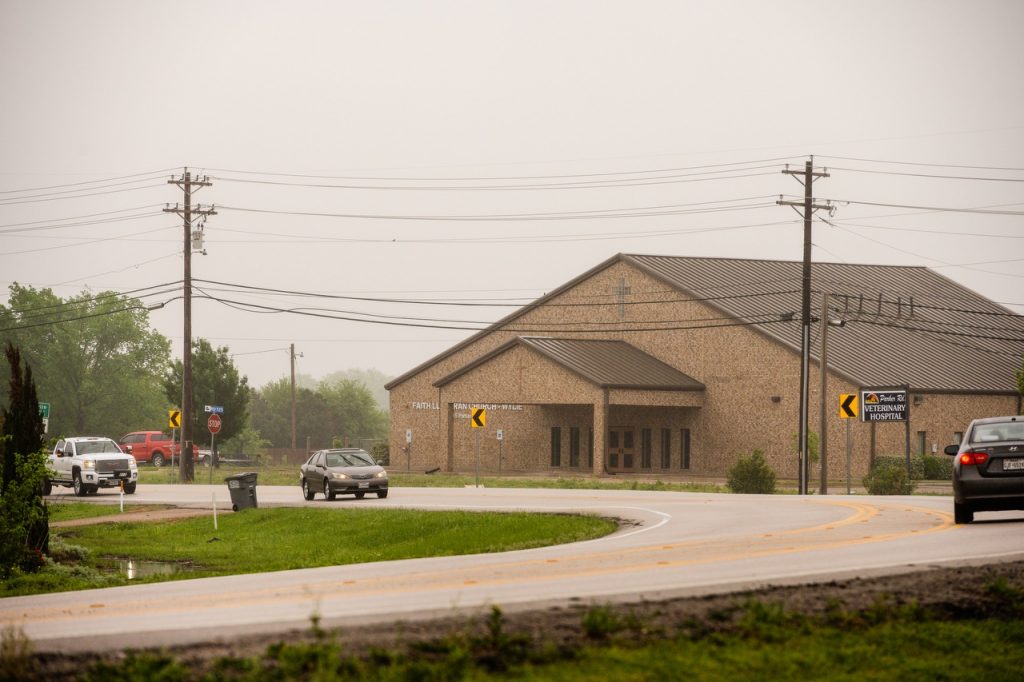
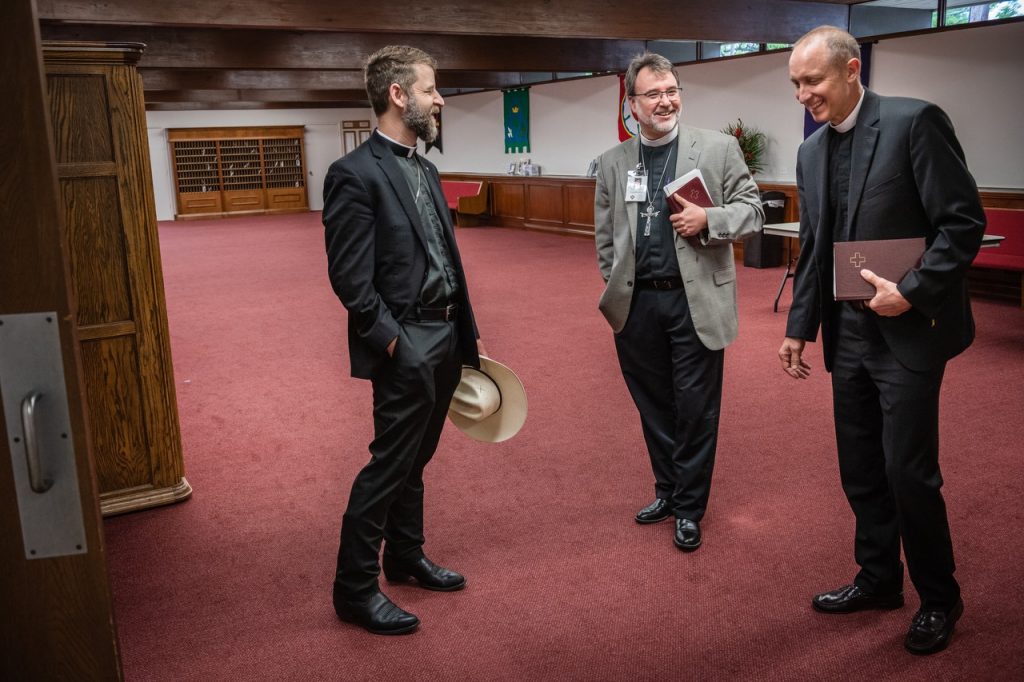
Top: Faith Lutheran Church in Wylie. Bottom: The Rev. Kurt Ulmer, pastor of Faith, Wylie, chats with the Rev. Stephen Kieser, headmaster of Faith Lutheran School, Plano, and the Rev. James Woelmer, senior pastor of Faith Lutheran Church, Plano, after morning prayer with students.
Faith is a daughter of Faith. Faith, Plano, started Faith, Wylie, when some members who lived near Wylie, together with one of their pastors, noted the potential growth in the area. That was 2002. Now, 17 years later, Faith, Wylie, is looking to become fully independent.
Though this independence is a necessary step, there is also a larger goal that motivates the members of Faith. If Faith, Wylie, can gain financial independence, then they can play a part in the next church plant. And that’s the plan. And so it continues. Churches planting churches.
“Church is church, it’s everything important in life,” said David Horn, a member of Faith, Plano, who later joined Faith, Wylie. He likes the Wylie congregation because it is smaller than Faith, Plano.
“We are so thankful for the pure Gospel taught and preached,” said Woelmer. “We want others to also hear and to believe in this pure Gospel.”
Whether planting churches, combining parishes, maintaining the current situation or seeking new ways, the church continues to be the Bride of Christ, “lambs who hear the voice of their Shepherd” (Smalcald Articles III XII 2). And we trust that God blesses every effort according to His will and in His time.
Learn More
- Learn about Mission Field: USA, the Synod’s church-planting initiative: lcms.org/how-we-serve/national/church-planting
- Support church-planting efforts through Mission Field: USA: lcms.org/givenow/mission-field-usa
Pray with Us
Blessed are You, O Lord, King of the universe. You plant Your church where it pleases You. Teach us all to shine the light of Christ in each place and in every circumstance. Bless congregations as they seek to be faithful to preach Christ crucified and to administer the Sacraments according to Your will. Provide for those congregations facing difficulties, that they can continue to serve in their present setting. Bless also those who see needs that can be addressed through planting a new congregation. Grant us wisdom to trust in You whatever our place and situation, knowing that Your Kingdom will come according to Your holy will. In Jesus’ name. Amen.
Share Jesus with the World
Your generosity today makes possible your Synod’s witness and mercy efforts both at home and abroad.
Are you looking to direct your gifts for work that’s more specific?
Visit the LCMS online ministry and mission catalog to find those opportunities most meaningful to you!
Don’t see what you’re looking for?
Contact LCMS Mission Advancement at 888-930-4438 or mission.advancement@lcms.org to talk about all the options available.
Dr. Kevin Armbrust
Director of Editorial for LCMS Communications.
Erik M. Lunsford
Managing photojournalist for LCMS Communications.

